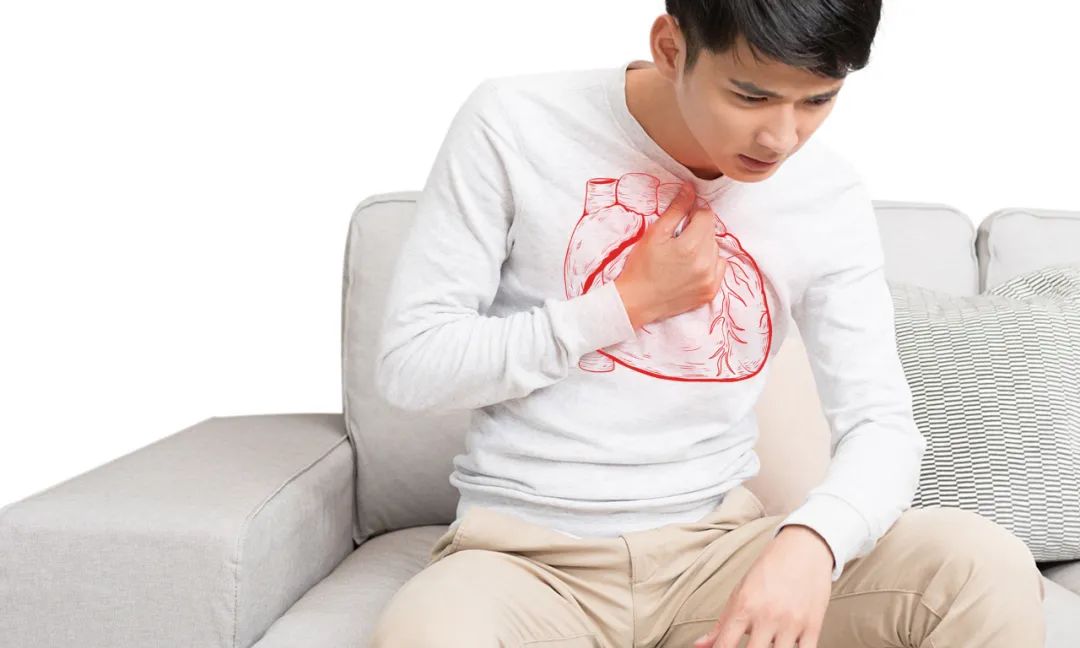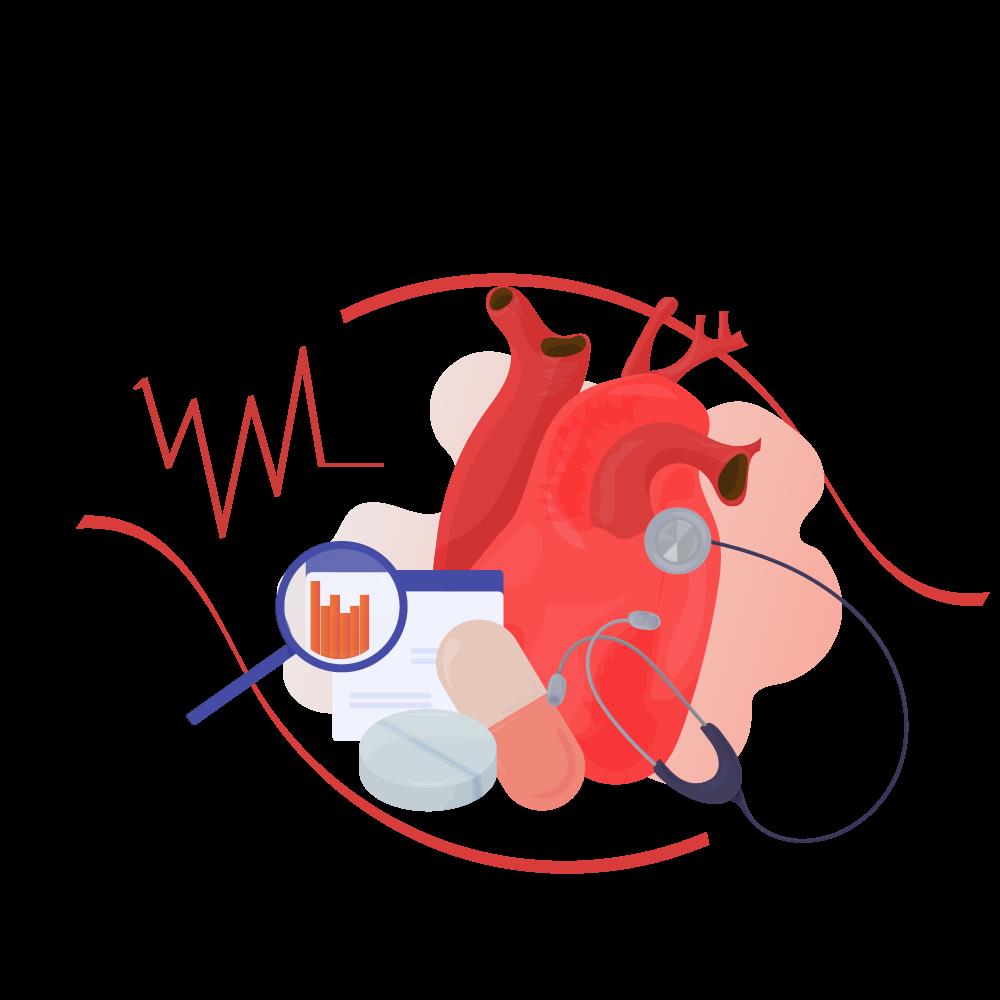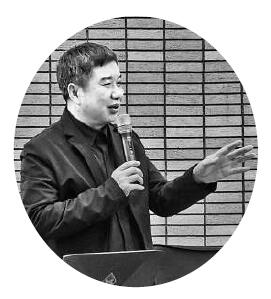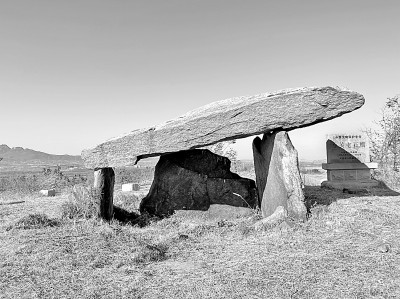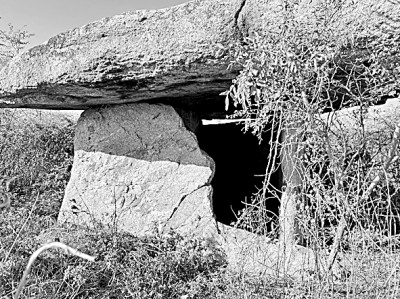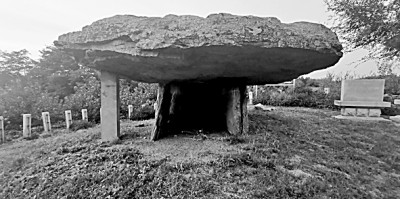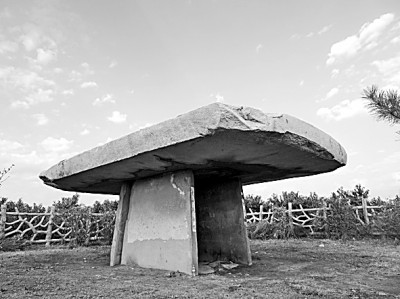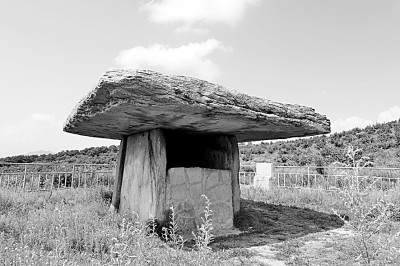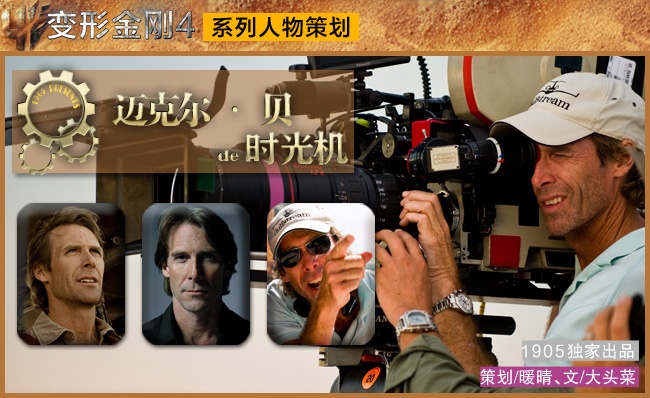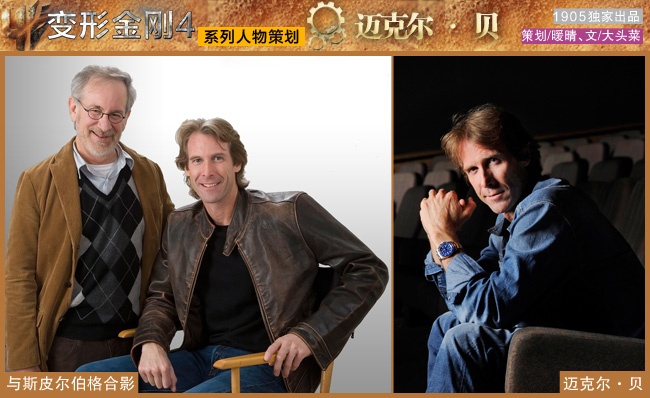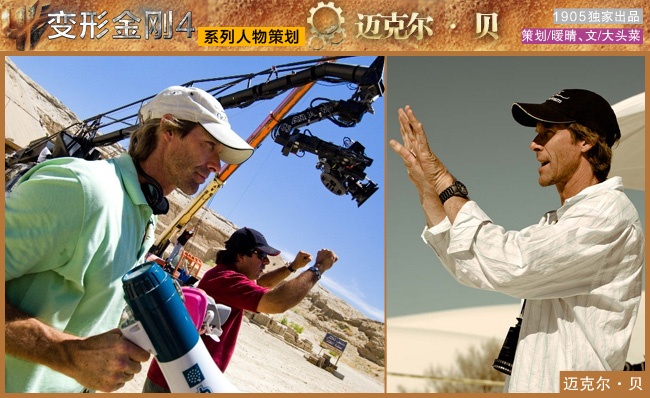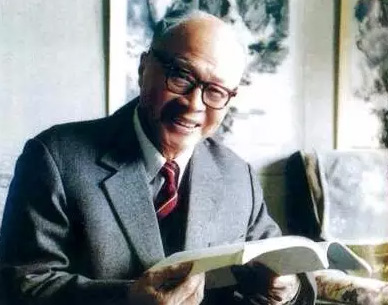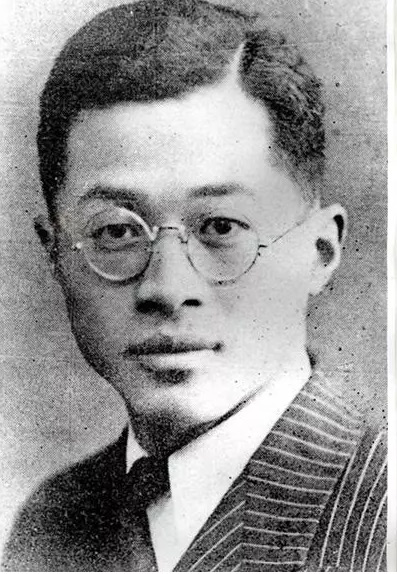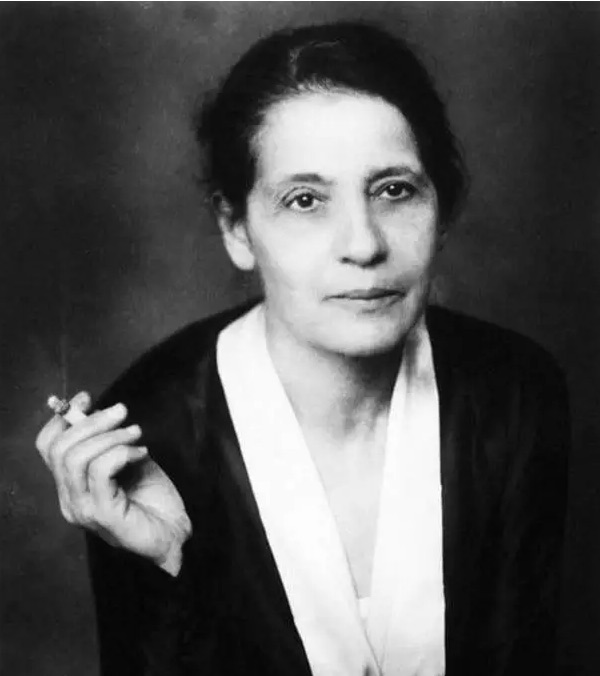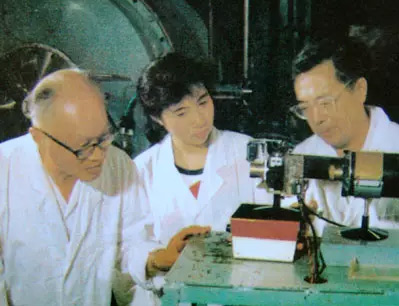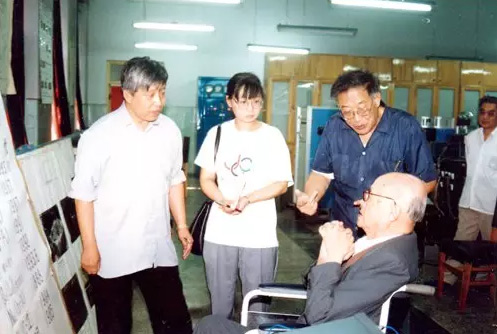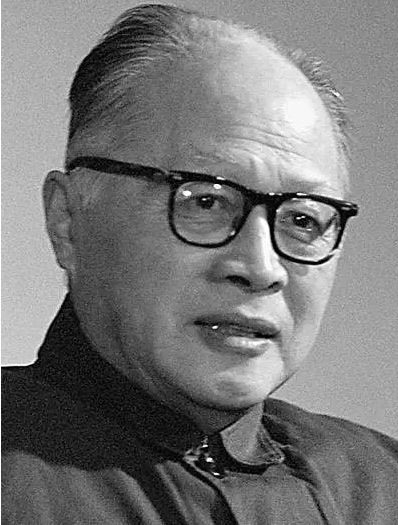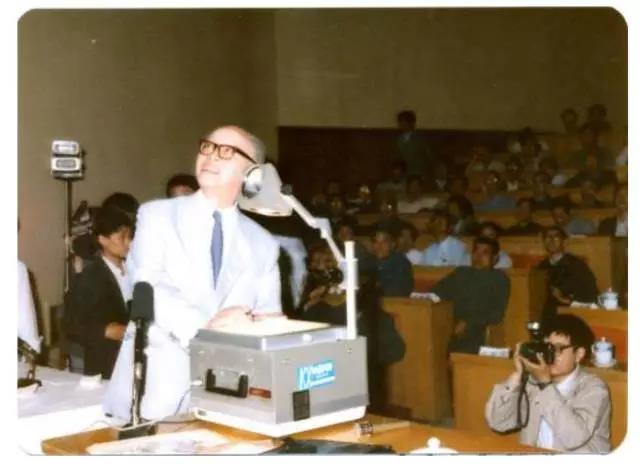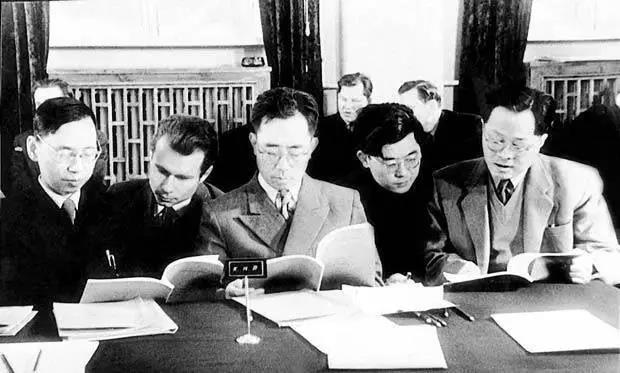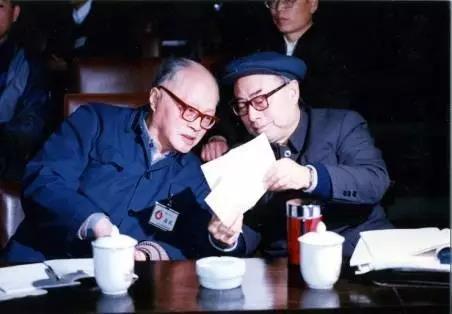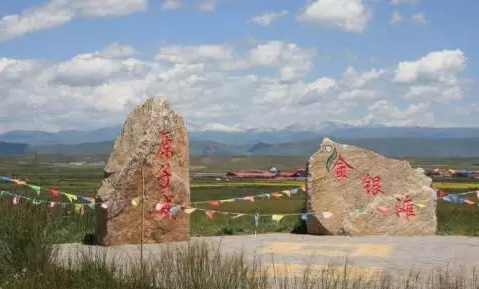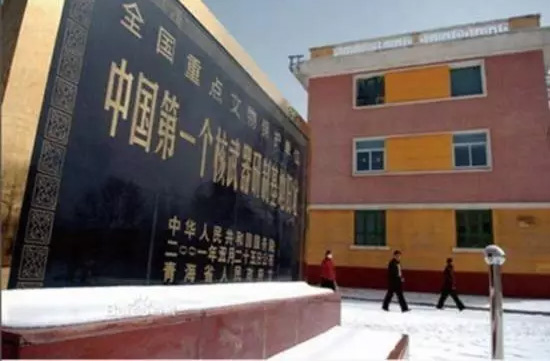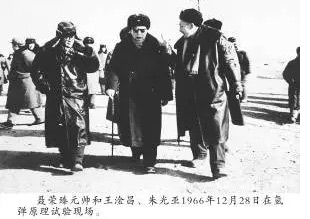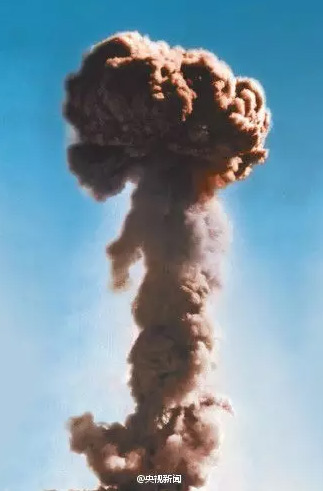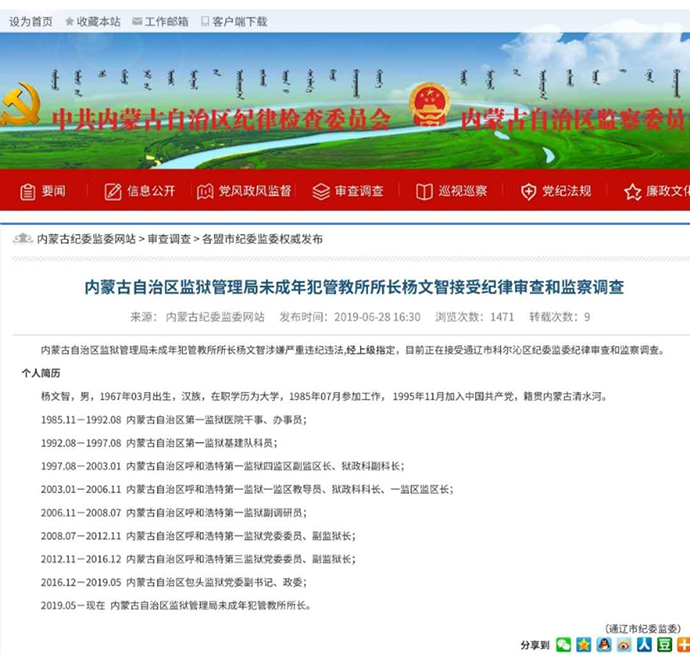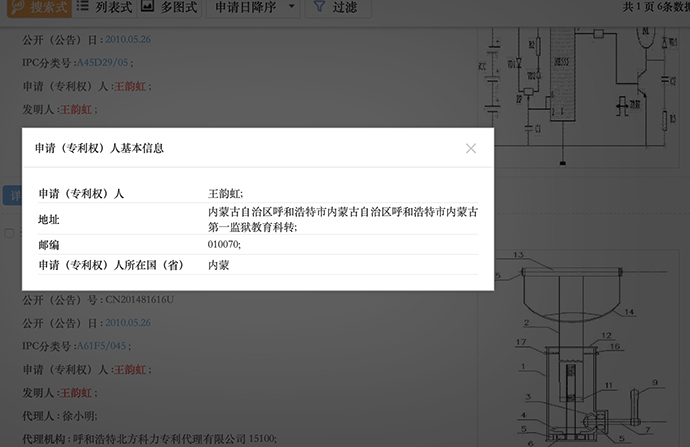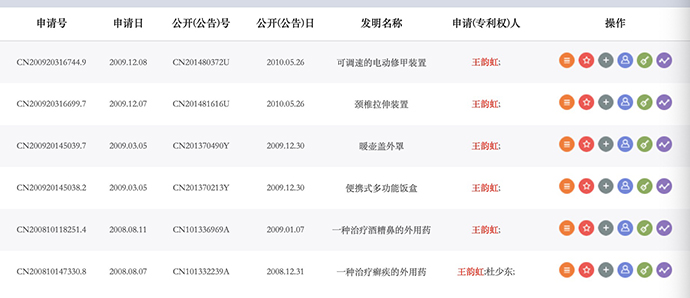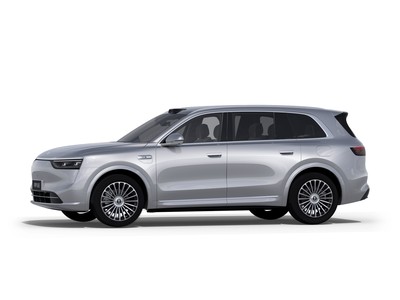The 21st meeting of the Standing Committee of the Tenth People’s Congress of Guangzhou on November 29th, 1995 was approved by the 22nd meeting of the Standing Committee of the Eighth People’s Congress of Guangdong Province on June 1st, 1996, and the 30th meeting of the Standing Committee of the 13th People’s Congress of Guangzhou on October 29th, 2010 was revised for the first time on January 17th, 2011. The fourth meeting approved the amendment to the Standing Committee of the 16th Guangzhou Municipal People’s Congress on August 19th, 2022 in accordance with the Decision on Amending Sixty-six Local Regulations such as Guangzhou Building Regulations due to Administrative Division Adjustment adopted at the 39th meeting of the Standing Committee of the 14th Guangzhou Municipal People’s Congress on May 20th, 2015 and approved at the 21st meeting of the Standing Committee of the 12th Guangdong Provincial People’s Congress on December 3rd, 2015. The fifth meeting of the Committee was revised for the second time (approved at the 47th meeting of the Standing Committee of the 13th Guangdong Provincial People’s Congress on November 30, 2022)
Catalogue
Chapter I General Principles
Chapter II Pre-hospital Medical Emergency Network
Chapter III Pre-hospital Medical Emergency Treatment
Chapter IV Public First Aid
Chapter V Social Emergency Medical Security
Chapter VI Legal Liability
Chapter VII Supplementary Provisions
Chapter I General Principles
Article 1 In order to standardize the social emergency medical treatment, improve the social emergency medical service level, timely and effectively rescue critically ill patients, and ensure the health and life safety of citizens, these Regulations are formulated in accordance with the Law of People’s Republic of China (PRC) on Basic Medical Care and Health Promotion and other relevant laws and regulations, combined with the actual situation of this Municipality.
Article 2 These Regulations shall apply to social emergency medical activities and their supervision and management within the administrative area of this Municipality, including pre-hospital medical emergency and public emergency.
The term "pre-hospital medical first aid" as mentioned in these Regulations refers to the medical activities that are carried out by medical institutions undertaking pre-hospital medical first aid tasks in accordance with the command and dispatch of emergency medical command institutions, and are mainly based on on on-site rescue, emergency treatment in transit and monitoring before patients are delivered to medical institutions for treatment.
The term "public first aid" as mentioned in these Regulations refers to the timely rescue of patients by social organizations and individuals at the scene of emergencies or accidental injuries.
Article 3 Social emergency medical care is a public welfare undertaking led by the government and an important part of social public safety and public health system.
The municipal and district people’s governments shall, according to the needs of national economic and social development, incorporate social emergency medical care into the development plan of health care, establish a stable funding and personnel security mechanism, and ensure the synchronous and coordinated development of social emergency medical care and social economy.
The Municipal People’s Government shall formulate the development plan of social emergency medical care in this Municipality and make it public.
Article 4 The municipal health administrative department shall be responsible for the supervision and management of social emergency medical treatment within the administrative area of this Municipality, organize the implementation of these Regulations, and perform the following duties:
(a) to formulate and implement the development plan of social emergency medical care in this Municipality;
(two) the preparation and implementation of the city’s pre-hospital medical emergency network planning and automated external defibrillator configuration planning;
(three) to formulate policies and standards related to social emergency medical care in this Municipality;
(four) to supervise, manage, evaluate and assess the social emergency medical work in this Municipality;
(five) to organize and carry out emergency medical security for major social activities and emergency medical rescue for emergencies;
(six) to formulate and organize the implementation of the annual plan for the popularization and training of social emergency medical knowledge and skills in this Municipality;
(seven) other duties as prescribed by laws and regulations.
The district health administrative department is responsible for the supervision and management of social emergency medical work within its administrative area.
Development and reform, finance, civil affairs, public security, emergency management, planning and natural resources, transportation, education, market supervision and management, culture, radio and television tourism, human resources and social security, port, medical security, industry and information technology, communication management, government service data management, fire rescue, sports and other relevant administrative departments and units shall be responsible for social emergency medical related work within their respective functions and duties.
Article 5 The health administrative department shall regularly organize publicity, education and training on first aid knowledge and skills for communities, rural areas, organs, enterprises and institutions, so as to enhance the public’s awareness of first aid and their ability of self-help and mutual rescue.
Newspapers, television, radio, internet and other media should publish and broadcast public service advertisements for social emergency medical care, publicize the spirit of saving lives to the public, and popularize the knowledge and skills of emergency medical care.
Schools should take various forms to publicize, educate and train teaching staff and students in first aid knowledge and skills.
Residents’ committees, villagers’ committees and property service enterprises shall assist in the publicity, education and training of first aid knowledge, and raise residents’ awareness of first aid.
Article 6 This Municipality shall strengthen exchanges and cooperation with Hongkong, Macao and surrounding cities in social emergency medical treatment, explore the establishment of cross-regional social emergency medical treatment cooperation mechanism, and promote the coordinated development of health and health undertakings in Guangdong-Hong Kong-Macao Greater Bay Area.
Chapter II Pre-hospital Medical Emergency Network
Article 7 The pre-hospital medical emergency network of this Municipality is composed of emergency medical command institutions and "120" emergency network hospitals, as well as regional emergency medical centers established according to actual needs and emergency stations directly under the emergency medical command institutions.
The municipal health administrative department shall comprehensively consider the urban and rural layout, regional population, service radius, traffic conditions, distribution of medical institutions, reception capacity and other factors, prepare the pre-hospital medical emergency network planning of this Municipality, and report it to the Municipal People’s Government for approval before promulgation and implementation. The pre-hospital medical emergency network planning in this city is an important part of the special planning for the layout of medical facilities in this city, and it should follow the overall planning of land space, and the main contents involved in the spatial layout should be included in the detailed planning of land space.
Eighth emergency medical command institutions in this Municipality include the municipal emergency medical command center and the emergency medical command sub-centers established according to actual needs.
City Emergency Medical Command Center is responsible for the unified organization, command and dispatch of pre-hospital medical emergency within the administrative area of this Municipality. The emergency medical command sub-center is responsible for the organization, command and dispatch of pre-hospital medical emergency within its jurisdiction, and accepts the unified command and dispatch and business guidance of the municipal emergency medical command center.
Ninth emergency medical command institutions shall perform the following duties:
(a) set up a "120" call-for-help hotline, equipped with different levels of command and dispatch personnel such as call-for-help acceptance, dispatch and disposal, organization and command;
(two) the implementation of a 24-hour duty system, at any time to accept the call for help;
(three) timely dispatch instructions, and coordinate the problems encountered in pre-hospital medical emergency tasks;
(four) to be responsible for the registration, summary, statistics, preservation and reporting of the information received for emergency call for help, and to accept the application for inquiry;
(five) to organize training and assessment of command and dispatch personnel and emergency personnel, and to carry out pre-hospital medical emergency research and publicity and education;
(six) to manage the pre-hospital medical emergency network and ensure the normal operation of the command and dispatch communication system and the pre-hospital medical emergency network;
(seven) responsible for the supervision and deployment of "120" emergency vehicles;
(eight) to assist the relevant government departments to carry out emergency medical security for major social activities and emergency medical rescue work for emergencies;
(nine) other duties as prescribed by laws and regulations.
Article 10 Emergency medical command institutions shall comprehensively consider the population size, daily business volume of calling for help, the requirement of answering the national "120" call for help within 10 seconds and the actual needs of this Municipality, reasonably set up a corresponding number of "120" call for help lines, scientifically equip command and dispatch personnel, and ensure timely answering and handling of public call for help.
Command and dispatch personnel should be familiar with the basic situation of emergency medical knowledge and social emergency medical network, and have professional command and dispatch ability and level.
Eleventh municipal health administrative departments shall, jointly with the relevant departments, establish the "120" command platform in Guangzhou, and implement the dynamic information management of the pre-hospital medical emergency network.
The "120" command platform should have the functions of "120" emergency vehicle positioning, emergency number auxiliary positioning, computer-aided dispatching, remote data transmission, etc., and be connected with hospital information systems and emergency systems such as "110", "119" and "122" to realize information sharing and linkage.
Twelfth "120" emergency network hospital by the health administrative department in accordance with the city’s pre-hospital medical emergency network planning and the following requirements, organize experts to review and determine, and announced to the public:
(a) to meet the standards of general hospitals above grade two;
(two) an emergency department, and in accordance with the provisions with professional knowledge and skills of emergency medical practitioners, practical nurse;
(three) equipped with rescue ambulance, the car equipment and first-aid drugs, equipment in line with the configuration standards, and equipped with a stretcher;
(4) Having a sound emergency medical management system;
(5) Other requirements for undertaking pre-hospital medical emergency tasks.
The municipal health administrative department shall establish the exit mechanism of pre-hospital medical emergency network, and the specific rules shall be formulated by the municipal health administrative department.
Article 13 The "120" emergency network hospital shall set up a pre-hospital emergency group under the emergency department, set up a full-time pre-hospital medical emergency team, and be equipped with emergency personnel consisting of qualified medical practitioners, practical nurse, stretcher bearers and drivers trained and assessed by emergency medical command institutions, and take measures to encourage health technicians to engage in pre-hospital medical emergency work.
The municipal health administrative department shall, on the basis of the existing pre-hospital medical emergency network, set up a regional emergency medical center and a first-aid station directly under the emergency medical command institution according to the actual situation of this Municipality. The first-aid stations directly under the regional emergency medical centers and emergency medical command institutions shall conform to the standards of the first-aid centers and first-aid stations in the Regulations on the Administration of Medical Institutions and the Basic Standards for the Establishment of Medical Institutions. The specific measures shall be formulated by the municipal health administrative department.
Fourteenth "120" emergency network hospitals, regional emergency medical centers and emergency stations directly under the emergency medical command institutions shall perform the following duties:
(a) the implementation of the 24-hour consultation system;
(two) obey the command and dispatch of emergency medical command institutions, complete the pre-hospital medical emergency tasks, and do a good job in the registration, summary, statistics, preservation and reporting of pre-hospital medical emergency information;
(three) the implementation of emergency medical operation norms;
(four) in accordance with the relevant provisions of the state, province and city, the daily management of "120" emergency vehicles and their emergency medical drugs, instruments, emergency equipment and medical personnel;
(five) strictly implement the emergency medical service price stipulated by the administrative department of medical security, and publicize the charging items and standards;
(six) the establishment and implementation of emergency doctors, nurses, stretchers, drivers pre-service and post training and education system, regularly carry out first aid training and drills;
(seven) other duties as prescribed by laws and regulations.
Fifteenth regional emergency medical center, emergency medical command institutions directly under the first aid station in addition to performing the duties stipulated in Article 14 of these regulations, should also perform special medical security, emergency medical rescue support and other duties.
The regional emergency medical center is responsible for the pre-hospital emergency training and quality management of the "120" emergency network hospital and the emergency station directly under the emergency medical command organization in the service area.
Article 16 In areas where medical resources are in short supply, the health administrative department may, according to the actual needs, determine that the local medical institutions meeting the requirements of Item 2, Item 3 and Item 4 of Paragraph 1 of Article 12 of these Regulations shall temporarily undertake the pre-hospital medical emergency tasks.
In rural areas where medical resources are in short supply, licensed assistant doctors who have passed the training and examination of emergency medical command institutions can participate in the implementation of pre-hospital medical emergency work.
Areas with shortage of medical resources shall be determined and adjusted by the municipal health administrative department in accordance with the relevant provisions of the state and province.
Seventeenth medical and health institutions should organize their own medical staff to receive first aid training and assessment.
Chapter III Pre-hospital Medical Emergency Treatment
Eighteenth pre-hospital medical emergency follow the principle of unified command and dispatch, rapid treatment.
Nineteenth emergency medical command institutions, "120" emergency network hospitals, regional emergency medical centers, and emergency stations directly under emergency medical command institutions shall use unified pre-hospital medical emergency signs. Command and dispatch personnel, emergency personnel shall be in accordance with the provisions of dressing the.
The "120" emergency vehicle shall be painted with a unified first-aid logo in accordance with the regulations, and a unified alarm device shall be installed and used. "120" emergency network hospitals, regional emergency medical centers and emergency stations directly under emergency medical command institutions shall regularly inspect, inspect, maintain, update, clean and disinfect "120" emergency vehicles and their emergency medical instruments and equipment to ensure their good conditions.
Emergency medical command institutions shall be equipped with vehicles for emergency command, communication, material support and other purposes, and shall not be used for other purposes.
Twentieth "110", "119" and "122" and other emergency systems shall notify the emergency medical command organization within one minute after receiving the call for help.
Twenty-first emergency medical command institutions shall, in accordance with the principle of urgency and proximity, send dispatch instructions to the "120" emergency network hospital, regional emergency medical center or the first-aid station directly under the emergency medical command institutions within one minute after the emergency information is answered; Command and dispatch personnel can give necessary first-aid guidance to those who call for help.
Twenty-second "120" emergency network hospitals, regional emergency medical centers or emergency stations directly under the emergency medical command institutions shall dispatch "120" emergency vehicles and emergency personnel within three minutes after receiving the dispatching instructions from the emergency medical command institutions.
On the premise of ensuring traffic safety, emergency personnel should arrive at the emergency scene as soon as possible; Get in touch with the rescuers in time before arriving at the scene and give necessary first aid guidance.
First-aid personnel who encounter vehicle failure, traffic congestion, etc. on the way and are not expected to arrive at the first-aid scene within fifteen minutes after receiving the dispatching instruction shall immediately report to the emergency medical command organization and explain the situation to the emergency personnel. Emergency medical command institutions shall, according to the actual situation, assist emergency personnel to take measures such as asking the traffic management department of the public security organ for help, or dispatching other emergency vehicles to the emergency scene.
Twenty-third emergency personnel arrived at the scene, should ensure the safety of the rescue environment, in accordance with the norms of emergency medical operation immediately to treat patients.
On-site staff shall, within the scope of their duties, take measures to ensure the safety of the rescue environment and provide assistance and convenience for on-site first aid activities. On-site patients or their guardians or close relatives shall assist emergency personnel in relevant work.
If the emergency medical command organization cannot confirm the patient’s address or the emergency personnel cannot enter the scene to carry out first aid, it shall request the assistance of the public security organ or the fire rescue department; Public security organs, fire rescue and other departments shall provide timely assistance.
Article 24 If a patient needs to be sent to a medical institution for treatment after on-site disposal by emergency personnel, the emergency personnel shall follow the principle of being near, being urgent and meeting professional needs, and transfer the patient to a medical institution for timely treatment in combination with the wishes of the patient or his guardian or close relatives.
If the patient or his guardian or close relative requests to be sent to the designated medical institution, the emergency personnel shall inform him of the possible risks, and send the patient to the designated medical institution after the patient or his guardian or close relative signs to confirm that he will bear the risks himself.
Under any of the following circumstances, the emergency personnel have the right to decide to send the patient to the corresponding medical institution according to the principle of being near, urgent and meeting professional needs, and inform the reasons and truthfully record, and the patient or his guardian or close relatives shall cooperate:
(1) The patient is in critical condition or life-threatening;
(2) The distance between the medical institution required to be sent and the emergency scene is more than ten kilometers;
(three) the medical institution that is required to be sent does not have the corresponding treatment conditions;
(4) The patient or his guardian or near relative requests to be sent to the medical institution designated by him, but refuses to sign to confirm that he bears the risk himself;
(5) It is necessary to treat patients in isolation according to law;
(six) medical institutions designated by the government in response to emergencies;
(seven) there are special provisions in laws and regulations.
Twenty-fifth patients need to be transported to medical institutions for treatment after on-site disposal, and emergency personnel shall immediately notify the medical institutions to make preparations for treatment. Medical institutions do not have the corresponding treatment conditions, or patients and their guardians and close relatives choose to be sent to other medical institutions, emergency personnel shall immediately report to the emergency medical command organization. After receiving the report, the emergency medical command institution shall contact the medical institution in time to prepare for the treatment.
After the patient is sent to a medical institution, the emergency personnel shall handle the handover formalities with the medical institution in time, and the medical institution shall immediately treat the patient.
Twenty-sixth emergency medical command institutions in the distress information found that patients suspected of infectious diseases need special protection, it should guide patients to do a good job of protection, and immediately issued a dispatch instruction. The "120" emergency network hospital, the regional emergency medical center or the first-aid station directly under the emergency medical command institution that receives the dispatching instruction shall promptly dispatch "120" emergency vehicles and emergency personnel that meet the protection requirements. First-aid personnel who find patients suspected of infectious diseases need special protection during on-site treatment shall immediately report to the emergency command organization and send the patients to the designated hospital. Where there are other provisions in laws and regulations, such provisions shall prevail.
Medical institutions shall not refuse to accept or delay the treatment of patients on the grounds of epidemic prevention and control. In case of refusing to receive or delaying the treatment of patients, emergency personnel shall immediately report the situation to the emergency medical command organization, which shall coordinate and deal with it in time; Patients or their guardians or close relatives can also call the "120" emergency number to reflect the situation. When necessary, the emergency medical command organization shall report the situation to the health administrative department in time, and the health administrative department shall deal with it in time.
The municipal health administrative department shall formulate the medical emergency plan for emergencies within its administrative area. In the event of an emergency, the health administrative department shall set up a special emergency transport team according to the classification of the emergency medical emergency plan, and guide and standardize the social emergency medical treatment to ensure the smooth rescue channels. All kinds of medical institutions at all levels in the city shall, in accordance with the emergency response level, open a green channel for the treatment of critically ill patients, and accept the unified command and dispatch of emergency medical command institutions to conduct on-site treatment and transshipment of patients.
Twenty-seventh emergency medical command institutions shall properly keep the "120" emergency hotline telephone recording, emergency call for help acceptance information and other information, and keep it for not less than three years. "120" emergency network hospitals, regional emergency medical centers, and first-aid stations directly under emergency medical command institutions shall, in accordance with the relevant provisions on medical records management of medical institutions, do a good job in information recording and data storage in the process of on-site rescue, treatment during transit, and monitoring.
If the relevant units or individuals apply for inquiry and retrieval of the above information within the preservation period, the emergency medical command organization, the "120" emergency network hospital, the regional emergency medical center or the first-aid station directly under the emergency medical command organization shall provide it with reference to the relevant provisions on medical record management of medical institutions.
Twenty-eighth prohibit the following acts of disrupting the order of pre-hospital medical emergency:
(a) fraudulent use of emergency medical command institutions, "120" emergency network hospitals, regional emergency medical centers, emergency stations directly under emergency medical command institutions, and the name and first aid logo of "120";
(two) engaged in pre-hospital medical emergency activities in the name of counterfeit "120" emergency vehicles;
(three) unauthorized use of "120" emergency vehicles to perform non-pre-hospital medical emergency tasks, or unauthorized use of "120" emergency vehicles to transfer non-emergency patients;
(four) the use of "120" alarm and sign lamps when not performing emergency tasks;
(five) false distress information, malicious distress and other interference to the "120" emergency hotline;
(6) refusing to avoid or obstruct the passage of ambulances performing medical emergency tasks;
(seven) insult, threat, intimidation, abuse, injury, obstruction of emergency personnel, hinder the normal development of pre-hospital medical emergency work;
(eight) other acts that disrupt the pre-hospital medical emergency order and violate the provisions on public security management.
Article 29 The health administrative department shall supervise and inspect the emergency medical command institutions, regularly organize annual assessment of the "120" emergency network hospitals, regional emergency medical centers and first-aid stations directly under the emergency medical command institutions, and announce the assessment results to the public; Those who fail the examination shall be ordered to make rectification within a time limit.
Thirtieth health administrative departments shall announce the emergency medical supervision telephone number to the public, accept reports and complaints, and deal with the reported and complained acts according to law. If it is a real name report or complaint, the health administrative department shall give a written reply to the informant or complainant in accordance with the regulations.
Chapter IV Public First Aid
Thirty-first encourage people who need medical emergency to call the "120" emergency hotline and provide necessary help.
Encourage individuals who have the ability of first aid to carry out emergency on-site rescue for patients before the arrival of medical emergency personnel, and their emergency on-site rescue behavior is protected by law. The city explores the establishment of a mechanism for volunteers to participate in public first aid. The municipal health administrative department explores the establishment of a call platform for medical emergency volunteers, calling qualified medical emergency volunteers around the patient site to voluntarily participate in on-site rescue before the emergency personnel arrive.
Article 32 This Municipality shall establish a public first aid training system. The municipal health administrative department shall formulate a training plan and unify the training contents and assessment standards. Units and individuals to carry out social emergency medical training activities, should implement a unified training content and assessment standards.
The health administrative department, the emergency medical command organization and the Red Cross Society shall, in accordance with the annual plan of the city’s social emergency medical knowledge and skills popularization training, carry out first-aid skills training on cardiopulmonary resuscitation, the use of automated external defibrillator, and the methods of relieving airway foreign body obstruction.
Encourage medical institutions, medical industry associations, medical research institutions and other organizations with training capabilities to provide first aid training services, and establish training ledgers to truthfully record information such as training teachers, objects and contents.
The units where the people’s police, fire rescue personnel, government service personnel, school staff, security personnel, tourism and public transport employees work shall organize the above-mentioned personnel to participate in first aid training.
Article 33 The management units of railway stations, long-distance bus stations, passenger terminals, urban rail transit stations, airports, expressway service areas, stadiums, scenic tourist areas and other places, enterprises engaged in high-risk sports, construction units and large industrial enterprises shall be equipped with necessary first-aid instruments and medicines, arrange staff or volunteers who have received first-aid training to be on duty during production and operation hours, and assist in emergency on-site rescue in pre-hospital medical first aid and emergencies.
The municipal administrative department of public health shall formulate the guiding catalogue for the allocation of first-aid equipment and drugs in public places, and make it public.
Article 34 Public places and units such as government service halls, airports, railway stations, passenger terminals, urban rail transit stations, expressway service areas, scenic tourist areas, schools, gymnasiums, old-age care institutions, shopping malls, etc. shall be equipped with automated external defibrillator, which shall be regularly inspected, maintained and recorded.
Encourage other public places and public security police stations, fire rescue stations and other units to configure automated external defibrillator, and encourage social forces to donate automated external defibrillator.
The municipal health administrative department shall formulate and promulgate the configuration planning and specifications of automated external defibrillator, and establish the electronic map, navigation and remote management system of automated external defibrillator to facilitate public inquiry and use.
Thirty-fifth support and encourage social forces such as emergency medical volunteer service organizations and emergency medical volunteers to participate in public emergency activities.
Encourage units and individuals to make donations and donations to social emergency medical services. The name of the donor can be marked on the donated materials according to law.
Encourage individuals to learn medical first aid knowledge and skills, and improve their ability of self-help and mutual rescue.
Chapter V Social Emergency Medical Security
Thirty-sixth municipal and District People’s governments shall set up special funds for pre-hospital medical first aid and incorporate them into the fiscal budget at the corresponding level.
Pre-hospital medical emergency special funds should be earmarked for the following aspects:
(a) purchase, update and maintain the "120" emergency vehicles, emergency medical equipment and instruments, communication equipment, etc.;
(II) Subsidize the expenses of pre-hospital emergency group of "120" emergency network hospital, regional emergency medical center, first-aid station directly under emergency medical command organization and medical institutions that temporarily undertake pre-hospital medical emergency tasks in accordance with the provisions of the first paragraph of Article 16 of these regulations to engage in "120" emergency medical treatment;
(three) publicity of first aid knowledge and first aid medical training and drills.
The municipal health administrative department shall formulate the "120" emergency medical subsidy standard of this Municipality. The health administrative department shall, in accordance with the standards, pay the "120" emergency medical subsidy to the "120" emergency network hospital, the regional emergency medical center, the first-aid station directly under the emergency medical command organization and the medical institutions that temporarily undertake the pre-hospital medical emergency tasks in accordance with the provisions of the first paragraph of Article 16 of this Ordinance.
Article 37 The municipal and district people’s governments shall increase financial investment in emergency medical treatment within their respective jurisdictions, improve the distribution of emergency stations directly under the "120" emergency network hospitals, regional emergency medical centers and emergency medical command institutions, equip "120" emergency vehicles in accordance with the relevant provisions of the state and the actual needs of this Municipality, and establish a cleaning and disinfection place for "120" emergency vehicles to meet the needs of pre-hospital medical emergency in this Municipality.
The administrative department of health in areas with shortage of medical resources shall, according to the pre-hospital medical emergency network planning, gradually improve the emergency medical conditions of primary medical and health institutions, and incorporate medical institutions that meet the conditions stipulated in the first paragraph of Article 12 of these regulations into the pre-hospital medical emergency network.
On the basis of the existing social emergency medical network, this city explores the construction mode of pre-hospital medical emergency and fire rescue as a whole, and establishes and improves the joint rescue mechanism to improve the efficiency of pre-hospital medical emergency.
Article 38 The municipal and district people’s governments shall strengthen the construction of emergency medical teams.
The competent administrative department of health shall, jointly with the administrative departments of human resources and social security, formulate an annual plan for the introduction, training and career development of command and dispatch personnel and emergency personnel according to the development plan of social emergency medical care in this Municipality.
Encourage medical colleges and universities in this administrative area to offer emergency courses and strengthen the discipline construction of emergency medicine.
Article 39 This Municipality shall establish and improve the linkage mechanism of land, air and water emergency medical services, and develop a diversified emergency medical service system.
The city will build a first-aid and disaster medical skill training base, a medical security and emergency material reserve.
The health administrative department shall establish an emergency medical rescue expert database.
General hospitals at or above the second level shall establish emergency medical rescue teams to participate in emergency medical work in major or especially major emergencies under the unified command and dispatch of the municipal emergency medical command center.
Fortieth health administrative departments and emergency medical command institutions shall regularly organize pre-hospital medical emergency and emergency medical rescue drills every year, timely evaluate the effect of the drills, and improve the ability and level of emergency rescue in this Municipality.
Article 41 This Municipality will include the medical expenses generated by pre-hospital medical emergency services in the reimbursement scope of medical insurance for urban workers and medical insurance for urban and rural residents. The specific measures shall be formulated by the municipal medical security administrative department in conjunction with the municipal health administrative department.
Forty-second relevant units shall provide the following guarantees for pre-hospital medical emergency work:
(a) the traffic administrative department of the public security organ shall ensure that the "120" emergency vehicles carrying out emergency tasks have priority; In the event of an emergency, a temporary special passage should be set up to ensure the passage of "120" emergency vehicles;
(II) The administrative department of medical security shall, in combination with factors such as the cost of emergency medical services and the income level of residents, formulate and publish the charging standard and adjustment mechanism of emergency medical services, and timely and truthfully pay the emergency medical expenses of patients who belong to social assistance in accordance with the relevant provisions of medical assistance;
(three) the communication enterprise shall ensure the smooth network of the "120" special line and provide the information, materials and technical services stipulated in the service contract to the emergency medical command organization in time;
(four) power supply enterprises should ensure the safe and stable power supply of emergency medical command institutions, "120" emergency network hospitals, regional emergency medical centers and emergency stations directly under emergency medical command institutions.
Forty-third "120" emergency vehicles to perform pre-hospital medical emergency tasks are protected by law and enjoy the following rights:
(1) Using alarms and sign lamps according to law;
(two) the use of bus lanes, fire engines, emergency lanes;
(3) Under the premise of ensuring safety, it is not restricted by the driving route, driving direction, driving speed and traffic lights;
(four) temporary parking in no-stop areas or sections;
(5) Exempting from paying parking fees for toll parking lots;
(six) other rights stipulated by laws and regulations.
Pedestrians and moving vehicles should take the initiative to avoid vehicles and personnel performing medical emergency tasks in time and provide convenience.
Article 44 Medical institutions such as the "120" emergency network hospital shall immediately treat the vagrants and beggars they receive, and notify the local relief management institutions in time. The relief management institution shall promptly go to the hospital to identify whether it belongs to the relief object; Those who belong to the rescue object shall go through the rescue registration procedures and pay the treatment expenses in accordance with the relevant provisions on the rescue management of vagrants and beggars.
Medical institutions such as "120" emergency network hospital shall assist patients who need emergency rescue due to accidental injury, have no economic ability to pay and have no other channels to solve the basic medical expenses during the first aid period in applying for special funds to pay the basic medical expenses during the first aid period in accordance with the relevant provisions on the management of special funds for social emergency medical assistance of the Red Cross in this Municipality.
Forty-fifth municipal and district people’s governments shall support the Red Cross and other organizations to carry out emergency rescue training and emergency rescue volunteer service.
The municipal and district people’s governments and relevant administrative departments can support and encourage social forces to carry out social first-aid training, allocate automated external defibrillator, establish social first-aid volunteer teams and other public first-aid construction by purchasing services and special subsidies.
Chapter VI Legal Liability
Forty-sixth health administrative departments and their staff have one of the following acts, and the competent authorities shall order them to make corrections within a time limit; If no correction is made within the time limit or the circumstances are serious, the responsible person in charge and the person directly responsible shall be dealt with according to law; If the case constitutes a crime, criminal responsibility shall be investigated according to law:
(a) in violation of the provisions of the twelfth paragraph, not in accordance with the provisions of the "120" emergency network hospital;
(two) in violation of the provisions of the second paragraph of article twenty-sixth, the medical institutions refused to accept or delay the treatment of patients in accordance with the provisions of the act, or not in accordance with the provisions of the formulation and implementation of emergency medical plans;
(three) in violation of the provisions of article twenty-ninth, not in accordance with the provisions of the assessment of "120" emergency network hospitals, regional emergency medical centers, emergency medical command institutions directly under the first aid station;
(four) in violation of the provisions of article thirtieth, to report and complain about violations of these regulations are not handled in time according to law or not in accordance with the provisions of the written reply to report and complain;
(five) in violation of the provisions of the first paragraph of article thirty-second, not in accordance with the provisions of the training plan, or not in accordance with the provisions of the unified training content, assessment standards;
(six) in violation of the provisions of the third paragraph of article thirty-fourth, not in accordance with the provisions of the automated external defibrillator configuration planning and specification, or not in accordance with the provisions of the establishment of automated external defibrillator electronic map, navigation and remote management system;
(seven) in violation of the provisions of the third paragraph of article thirty-sixth, not in accordance with the provisions of the payment of "120" emergency medical subsidies;
(eight) in violation of the provisions of article fortieth, not in accordance with the provisions of the organization to carry out pre-hospital medical emergency and emergency medical rescue drills;
(nine) to investigate and deal with the acts of emergency medical command institutions, "120" emergency network hospitals, regional emergency medical centers, first-aid stations directly under emergency medical command institutions and their staff in violation of these regulations;
(ten) other acts that do not perform the duties stipulated in these regulations according to law and damage the legitimate rights and interests of citizens, legal persons or other organizations.
Forty-seventh emergency medical command institutions in any of the following circumstances, the health administrative department shall order it to make corrections within a time limit; If no correction is made within the time limit, interview the main person in charge; If the circumstances are serious, the competent authority shall deal with the responsible person in charge and the person directly responsible:
(a) in violation of the provisions of Article 9, paragraph 4 or Article 27, paragraph 1, not in accordance with the provisions of the registration, summary, statistics, storage, reporting of emergency information, or not in accordance with the provisions of the acceptance of the inquiry application;
(two) in violation of the provisions of article ninth, fifth, not in accordance with the provisions of the organization training or assessment of command and dispatch personnel, emergency personnel;
(three) in violation of the provisions of article ninth, seventh, not in accordance with the provisions of the supervision and deployment of "120" emergency vehicles;
(four) in violation of the eighth item of Article 9 of these regulations, failing to perform the obligation of assistance in the emergency medical security of major social activities or emergency medical rescue work;
(five) in violation of the provisions of the nineteenth paragraph third, the first aid command, communications, material support and other vehicles for other purposes;
(six) in violation of the provisions of article twenty-first, not in accordance with the provisions of the dispatch of "120" emergency network hospitals, regional emergency medical centers, emergency medical command institutions directly under the first aid station;
(seven) in violation of the provisions of article twenty-sixth, not in accordance with the provisions of the dispatch instructions, or not in accordance with the provisions of the coordination;
(eight) in violation of the provisions of article fortieth, not in accordance with the provisions of the organization to carry out pre-hospital medical emergency and emergency medical rescue drills.
Forty-eighth "120" emergency network hospitals, regional emergency medical centers, emergency stations directly under emergency medical command institutions and their staff members violate the provisions of these regulations, and in any of the following circumstances, the health administrative department shall order them to make corrections within a time limit; If no correction is made within the time limit, the unit shall be informed criticism, and the unit shall be fined not less than 5,000 yuan but not more than 20,000 yuan; If the circumstances are serious, the unit shall be fined not less than 20,000 yuan but not more than 100,000 yuan, and the competent authority shall deal with the responsible person in charge and the person directly responsible according to law; If the case constitutes a crime, criminal responsibility shall be investigated according to law:
(a) in violation of the provisions of the thirteenth paragraph, not in accordance with the provisions of the establishment of full-time pre-hospital medical emergency team or equipped with emergency personnel;
(two) in violation of the provisions of the fourteenth paragraph, not to implement the 24-hour consultation system;
(three) in violation of the provisions of the second paragraph of Article 14, the first paragraph of Article 26 and the second paragraph of Article 27, refusing to accept the command and dispatch of emergency medical command institutions, or failing to do a good job in the registration, summary, statistics, preservation and reporting of pre-hospital medical emergency information in accordance with the provisions;
(four) in violation of the provisions of the third paragraph of article fourteenth, the first paragraph of article twenty-third, do not perform emergency medical operation norms;
(five) in violation of the provisions of article fourteenth of the sixth, not in accordance with the provisions of the training of emergency personnel;
(six) in violation of the provisions of article fifteenth, not in accordance with the provisions of the special medical security, emergency medical rescue support duties, or not in accordance with the provisions of the pre-hospital emergency training, quality management and other duties;
(seven) in violation of the provisions of the second paragraph of article nineteenth, not in accordance with the provisions of the inspection, inspection, maintenance, renewal, cleaning or disinfection of "120" emergency vehicles and emergency equipment;
(eight) in violation of the provisions of the first paragraph of article twenty-second, article twenty-sixth, not in accordance with the provisions of the "120" emergency vehicles and emergency personnel, or not in accordance with the provisions of the patient to the designated hospital;
(nine) in violation of the provisions of the second paragraph of article twenty-fifth and the first paragraph of article forty-fourth, refusing to treat patients;
(ten) in violation of the provisions of the third paragraph of article twenty-eighth, unauthorized use of "120" emergency vehicles to perform non pre-hospital medical emergency tasks.
Article 49 If a medical institution violates the provisions of Article 26 of these regulations and fails to perform the corresponding duties according to the provisions, it shall be handled by the health administrative department in accordance with the provisions of laws and regulations such as the Law of People’s Republic of China (PRC) on the Prevention and Control of Infectious Diseases and the Emergency Regulations for Public Health Emergencies.
Article 50 Whoever, in violation of the provisions of Item 1 and Item 2 of Article 28 of these Regulations, fraudulently uses the emergency medical command organization, the "120" emergency network hospital, the regional emergency medical center, the first-aid station directly under the emergency medical command organization, the name and first-aid logo of "120", or impersonates the name of "120" emergency vehicle, shall be ordered by the health administrative department to make corrections and be fined between 30,000 yuan and 50,000 yuan; Those who practice without obtaining the practice license of medical institutions shall be dealt with by the health administrative department in accordance with the provisions of laws and regulations such as the Law of People’s Republic of China (PRC) on Basic Medical Care and Health Promotion; If a crime is constituted, criminal responsibility shall be investigated according to law.
Units or individuals in violation of the provisions of the fourth to eighth of this Ordinance, disrupting the pre-hospital medical emergency order, by the public security organs in accordance with the "People’s Republic of China (PRC) Public Security Management Punishment Law" and other laws and regulations; If a crime is constituted, criminal responsibility shall be investigated according to law.
Fifty-first in violation of the provisions of the first paragraph of article thirty-fourth, not in accordance with the provisions of the allocation of automated external defibrillator, the health administrative department shall order it to make corrections within a time limit; If no correction is made within the time limit, the administrative department of health shall impose a fine of not less than ten thousand yuan but not more than thirty thousand yuan.
Article 52 If the relevant units and their staff violate the provisions of Article 42 of these regulations and fail to fulfill the obligations of social emergency medical security, which causes serious consequences, the competent authorities shall order them to make corrections, and the responsible persons in charge and the persons directly responsible shall be dealt with according to law; If a crime is constituted, criminal responsibility shall be investigated according to law.
Chapter VII Supplementary Provisions
Article 53 These Regulations shall come into force as of May 1, 2023.

